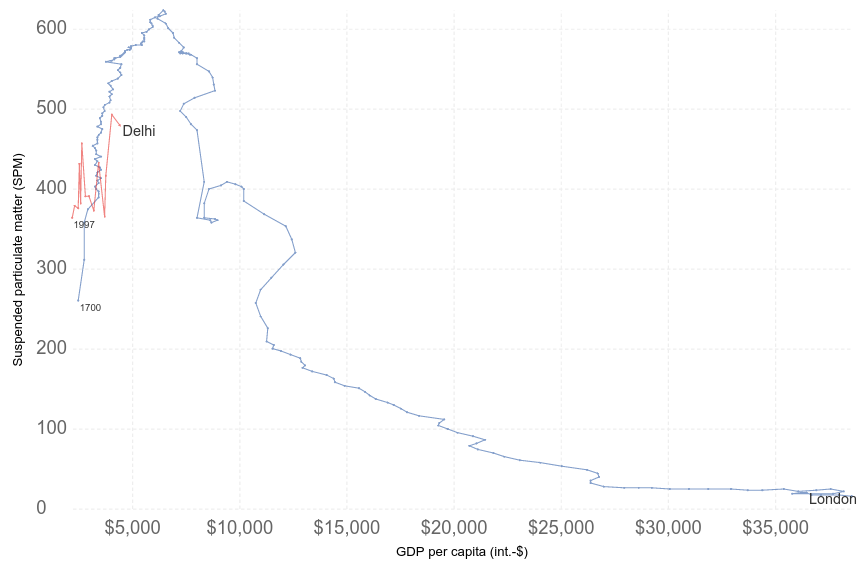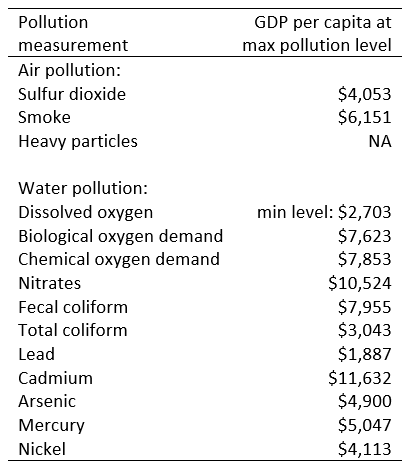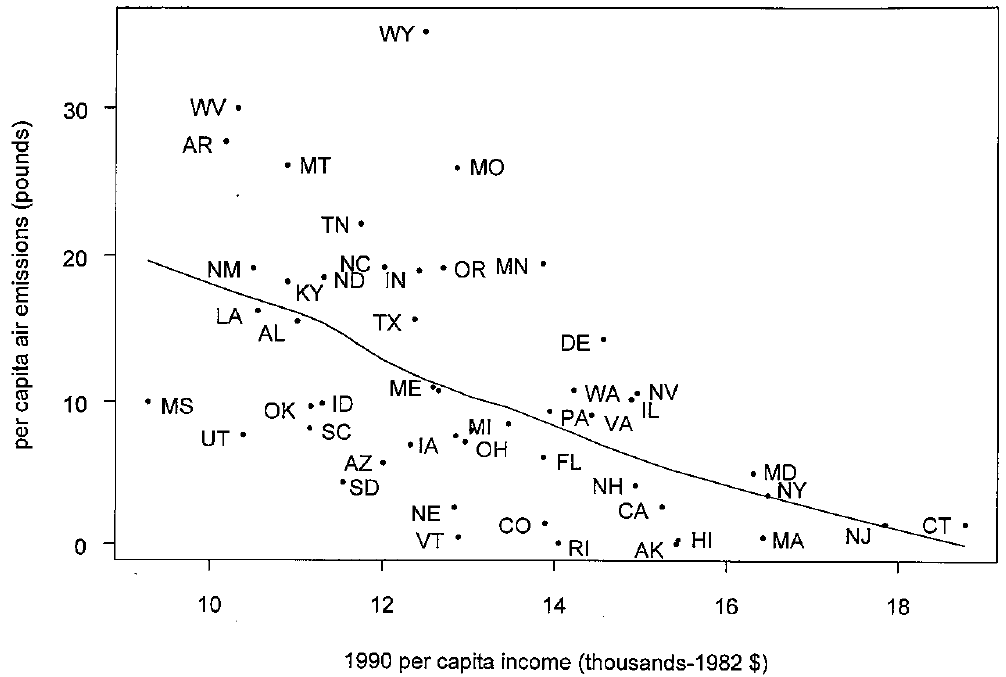
Suspended particulate matter (μg/m3) vs. GDP per capita (2011 USD)
London 1700-2015 and Delhi 1997-2015 [1]
Cleaner environment is achieved after people get free enough
This is the economic history of humanity in a nutshell. From 2 million or 200,000 or 20,000 or 2,000 years ago until the 18th century there was slow growth in population, almost no increase in health or decrease in mortality, slow growth in the availability of natural resources (but not increased scarcity), increase in wealth for a few, and mixed effects on the environment. Since then there has been rapid growth in population due to spectacular decreases in the death rate, rapid growth in resources, widespread increases in wealth, and an unprecedently clean and beautiful living environment in many parts of the world along with a degraded environment in the poor and socialist parts of the world.
That is, more people and more wealth have correlated with more (rather than less) resources and a cleaner environment…[2]
Cleaner environment has only come where there’s not too much socialism
In many cases, the overriding political imperative in socialist economies was increased industrial output, with little attention paid to accompanying air or water pollution…
When the Chernobyl accident occurred in the Soviet Union and the nuclear cloud was headed for Bulgaria the top government officials secreted themselves away in special shelters with ample supplies of food and water. Bulgarian citizens, however were not even informed that the disruption had happened and continued to eat contaminated fruit and vegetables.[3]
Cleaner environment is achieved after people get wealthy enough
The functional forms seem to reflect the relative costs and benefits that individuals and countries attach to addressing certain environmental problems at different stages of economic development. Water and sanitation, with relatively low costs and high private and social benefits are among the earliest environmental problems to be addressed. Local air pollution, which imposes external costs locally, but is relatively costly to abate, tends to be addressed when countries reach a middle income level. This is because air pollution problems tend to become more severe in middle income economies, which are often energy intensive and industrialized, and because the benefits are greater and more affordable.[4]
We find no evidence that environmental quality deteriorates steadily with economic growth. Rather, for most indicators, economic growth brings an initial phase of deterioration followed by a subsequent phase of improvement. The turning points for the different pollutants vary, but in most cases they come before a country reaches a per capita income of $8000.
 [5]
[5]
Even cleaner environment is achieved as people get even wealthier

Per capita air emissions of particulates less than 10 μm in diameter vs. per capita income for each individual state in the United States in 1990
Visually, the dominant feature across the set of figures is the greater variability of emission levels at low income levels. …the estimated variance for all pollutants decreased as income increased. The… curves… generally indicate a linear relationship between per capita emissions for the different classes of pollutants and per capita income, with a small number of high emitting outliers among the low-income states.[6]
- Ritchie, Hannah. “What the history of London’s air pollution can tell us about the future of today’s growing megacities.” Our World in Data, 20 June 2017, ourworldindata.org/london-air-pollution/. Accessed 15 Aug. 2017.
- Simon, Julian L. “More people, greater wealth, more resources, healthier environment.” Economic Affairs 14.3 (Apr. 1994): 22-29.
- Hill, Peter J. “Environmental Problems under Socialism.” Cato Journal 12.2 (1992): 321-335.
- Shafik, Nemat. “Economic development and environmental quality: an econometric analysis.” Oxford Economic Papers 46.4 (1994): 757-774.
- Grossman, Gene M., and Alan B. Krueger. “Economic growth and the environment.” The quarterly journal of economics 110.2 (1995): 353-377.
- Carson, Richard T., Yongil Jeon, and Donald R. McCubbin. “The relationship between air pollution emissions and income: US data.” Environment and Development Economics 2.4 (1997): 433-450.